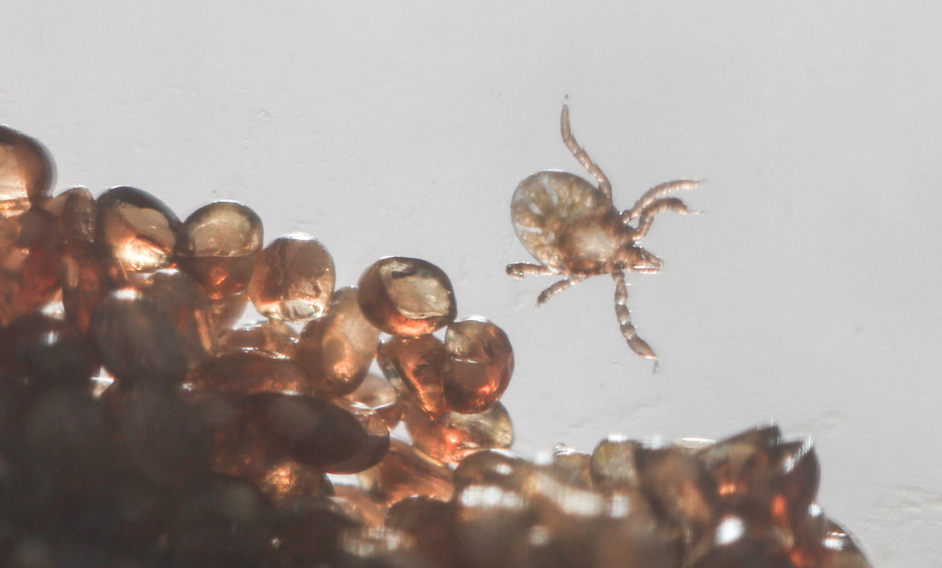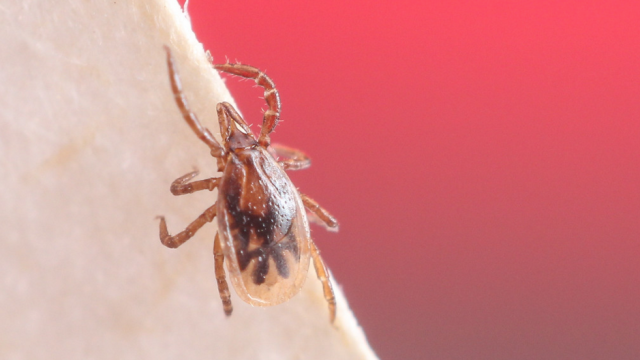Ticks — those unbreakable, blood-lusting arthropods that haunt your childhood memories — have some fascinating genetic secrets. The tick genome tells a tale of weaponised spit, expandable armour and how to drink 100 times one’s body weight in blood. Strangest of all, it’s utterly enormous.
“We knew the tick genome was going to be big going in, but we didn’t realise how big — about two-thirds the size of the human genome,” Catharine Hill, an entomologist at Purdue University told Gizmodo. “That’s a heck of a lot of DNA.”
Hill would know: she helped decode it all, in a massive analysis published this week in Nature Communications. The study, which took ten years and involved nearly 100 researchers, reveals the weird and fascinating DNA behind Ixodes scapularis, the infamous blacklegged tick that spreads Lyme disease across the eastern United States. Now that we’ve cracked its genetic code, we’re one step closer to defeating the tenacious parasite.
“We hear a lot these days about malaria, dengue, and Zika virus,” Hill said. “But Lyme disease is the most common vector-borne disease in the United States, and it’s very hard to eradicate.”
Like the crunchy arthropod itself, the I. scapularis genome was not easy to break into. “It’s been challenging every step of the way,” Hill said, noting that ticks have a very long, complex life cycle, and are difficult to grow in the lab. What’s more, I. scapularis’ genome is big and diverse — which meant scientists had to sequence, analyse and piece together hundreds of individual genetic libraries to build an accurate picture of the species. “That took a huge team of people and a lot of computational power,” Hill said.
Part of the reason the genome is so large is repetition. Many of I. scapularis’ genes have been copied, like pages of a book that were accidentally printed twice. Those duplications probably took place right around the end of the last Ice Age. “It’s possible that retention of more genes leads to the ability to exploit a larger number of habitats and hosts,” Hill said. “We want to learn what these genes are, and whether any of them can be targeted to prevent tick-borne disease.”
Other aspects of the I. scapularis genome are also offering insights into the parasite’s fascinating biology.

I. scapularis larva and eggs, via Andrew Nuss
Tick saliva, for instance, is a cornucopia of pharmaceuticals, containing thousands of antimicrobials, analgesics, blood thinners and immune suppressors. We’re not yet sure what each of these individual compounds does, but the net result is clear: an unmatched ability to feast, undetected, on the blood of many different organisms, for days on end.
“Tick bloodfeeding is really a phenomenal process,” Hill said. “Now it’s something that scientists can begin to methodically and systematically tease apart.”
Armed with its genome, researchers can create genetically modified strains of I. scapularis that are unable to express certain salivary proteins. This could help us identify — and halt — specific processes that are critical to bloodfeeding.
I. scapularis’ genome is also shedding light on the tick’s armour-like cuticle, which is both nigh indestructible and highly expandable. “We’ve started to identify some genes and pathways around this,” Hill said. “It’s been a mystery for a very long time.”
There are many directions Hill and her colleagues hope to take this research next, including drilling down into the mechanics of the most interesting, unique and heavily duplicated genes to figure out what, exactly, has led to I. scapularis’ evolutionary success. They also want to begin decoding the genomes of other species of ticks and mites.
“Now that we’ve got the genome for one tick, we’re not going to stop there,” Hill said. “We have a top ten favourite list of ticks and mites of medical importance, and we want to expand our studies to them. This work is an important milestone, but it’s really just the beginning.”
Top: I. scapularis adult, via Andrew Nuss
